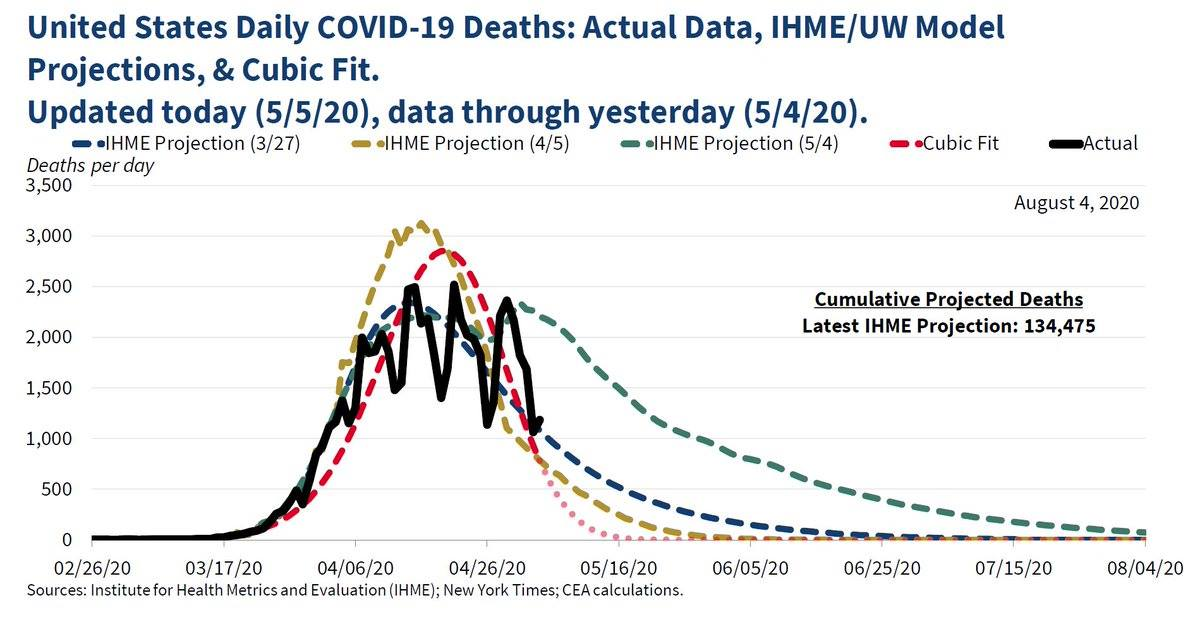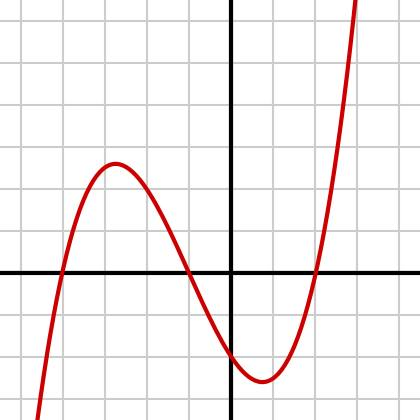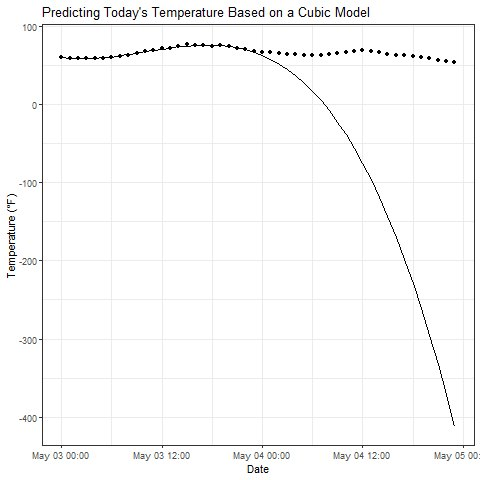As someone in this Twitter thread said, this tweet from the CEA (White House Council of Economic Advisors) is not going to age well. Notice the "Paint" style graphic of actual deaths that looks a bit like a Sharpie from you-know-who and the decision to put a cubic polynomial function into the mix with actual models as part of someone's idea of how to extrapolate data into the future. This was sent to me from my son who is finishing up his MS at RU in Data Science and he couldn't stop laughing.
Whoever Sean Taylor is in that Twitter thread nailed it - you simply don't ever use polynomials or any other math function to extrapolate (ok to interpolate) from existing data to future data without a deeper understanding of the process or system being evaluated. Ever. They're trying to use just a small piece of a cubic function to forecast future deaths going to zero - if you look at the standard graphic for a general cubic function, it looks like the graphic below, which would go into "negative deaths" and then go to infinity eventually.
On one level, this is hilarious, but when you realize that these are the people in charge of our country and analyzing when to reopen it, it's sad. This is 9th grade math folks. More embarrassment. First graphic is the CEA tweet, second is a generic cubic polynomial and the third just made me chuckle.



Whoever Sean Taylor is in that Twitter thread nailed it - you simply don't ever use polynomials or any other math function to extrapolate (ok to interpolate) from existing data to future data without a deeper understanding of the process or system being evaluated. Ever. They're trying to use just a small piece of a cubic function to forecast future deaths going to zero - if you look at the standard graphic for a general cubic function, it looks like the graphic below, which would go into "negative deaths" and then go to infinity eventually.
On one level, this is hilarious, but when you realize that these are the people in charge of our country and analyzing when to reopen it, it's sad. This is 9th grade math folks. More embarrassment. First graphic is the CEA tweet, second is a generic cubic polynomial and the third just made me chuckle.



